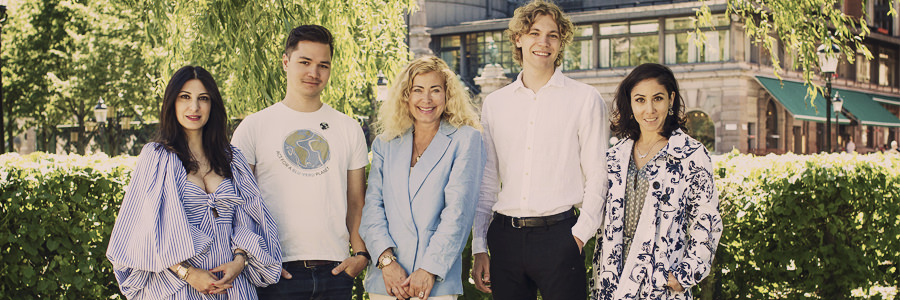No products in the cart.

Why Do Diversity and Inclusion Matter for Sustainability?
When most people think of sustainability, they think of an environmental movement focused on combating waste and reducing damage to the earth. However, sustainability also needs to be about creating a more equal, inclusive, and ethical world that can last for years to come.
The environmental issues that sustainability addresses impact a wide variety of communities, some more than others, and a diverse perspective is needed to fully understand how unsustainable business practices are impacting the planet. Further, non-white voices have historically been absent or ignored in the environmental movement, making it so only a few (mostly white) perspectives are taken into account. Therefore, it is important that we as consumers consider not just the environmental impact of a product, but the ways in which we can support diversity in companies so that all people can feel included and represented in the sustainability movement.
In this article, we will cover what exactly we mean by diversity and inclusion, some of the reasons why diversity and inclusivity matter especially to the sustainability cause, and what we as consumers can do to ensure companies strive for diversity and inclusion.
What Do Diversity and Inclusivity Mean?
Diversity is about involving a wide array of people with different experiences and backgrounds in any given setting, such as a workplace or a university classroom. For example, a diverse company should have employees who reflect the various identities that exist in our society, such as LGBT+, Black, Latinx, female, etc. Not every employee needs to hold every identity, but every group of people should have equal opportunity to work and be involved in the processes of creating and selling the company’s products.
Inclusivity is about how to make diverse groups of people, especially those who experience oppression or difficulties in society, feel included and supported. To be inclusive, companies should consider not just the wants and needs of white or male consumers, but also what people of color and non-men desire from their products and accommodate for their needs as well.
Diversity and inclusion go hand in hand because by having a more diverse group of people involved in their creative process, a company can be more inwardly and outwardly inclusive. When a wide variety of experiences and perspectives come together to make a diverse product, both the laborers and consumers can feel represented, respected, and included.

Unsustainable Products Affect Different People Differently
A major reason why diversity is important to sustainability is that different groups of people experience the effects of environmental crises (such as climate change) differently.
For example, the impact of environmental damage is unequally distributed across racial groups, with people of color experiencing the brunt of the negative effects. In the United States, Black and Latinx Americans are much more likely than their white counterparts to be exposed to pollutants.
Furthermore, many of the companies producing unsustainable products (such as fast fashion makers) exploit the labor of workers of color, women, and children, with low wages and unethical working conditions, meaning that unsustainable and environmentally damaging production negatively impacts these groups in particular over others.
5 Ways Consumers Can Help Support Diversity and Inclusion
1. A big way that we as consumers can help make diversity and inclusion a priority in the sustainability movement is to spend money on products made by diversely run businesses, such as Black-owned, women-owned, or queer-owned companies.
2. Additionally, we can purchase products from businesses who, through transparent measures, clearly work to promote inclusion and diversity in their workplaces and their supply chain.
3. Furthermore, we should be sure to examine the practices of the companies we are buying from to make sure that they are doing their part to create a more diverse and equal world. When buying clothes, check to see if the company is not just making good environmental choices, but also, for example, if they are hiring a racially diverse group of models or only selling clothing in small sizes. Look to see if makeup companies are providing a large range of shades in their products and if not, try to find a different company that does.
4. As the consumers, we have the power to hold businesses accountable to make the world a more diverse, inclusive, and equitable place. We can do this by researching brands before purchasing – look through the “about us” page on their websites or check out their social media to see if diversity and inclusivity are present in their branding, for example.
5. Finally, we need to listen to the voices of others when they tell us what a company is missing – if Black women say they are not being included or are being ignored, believe them and choose to buy somewhere else.
Above all, we should remember that through our spending, we can dictate what companies should prioritise (e.g. environmentally friendly, diverse, and inclusive products) and ultimately change the world for the better.
References:
https://www.greenbiz.com/article/why-diversity-sustainability-matters-and-what-you-can-do
https://builtin.com/diversity-inclusion
https://www.statista.com/statistics/1130214/pollution-exposure-racial-gap-united-states/
https://greenamerica.org/blog/factory-exploitation-and-fast-fashion-machine














